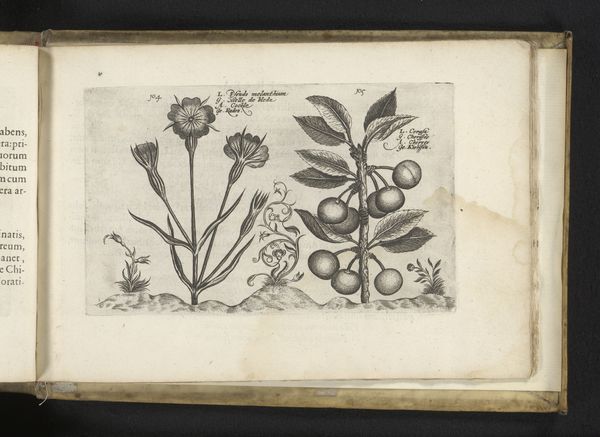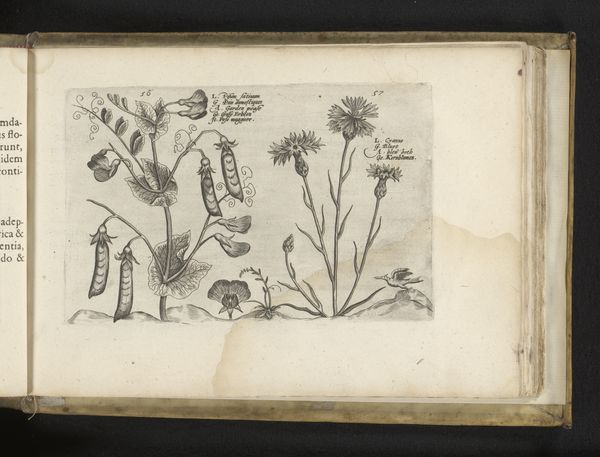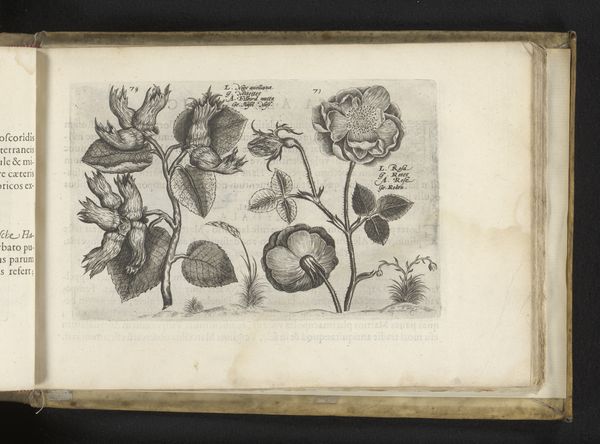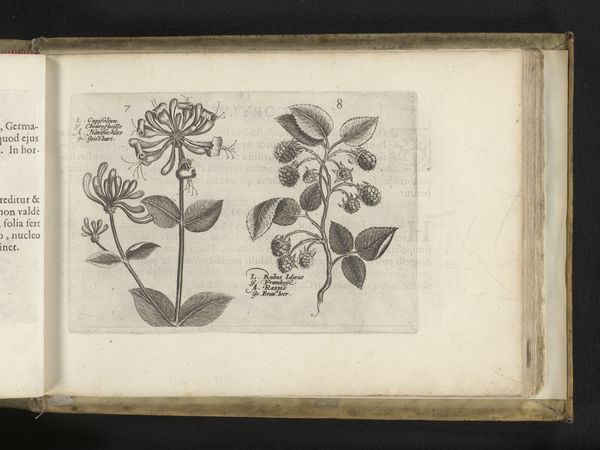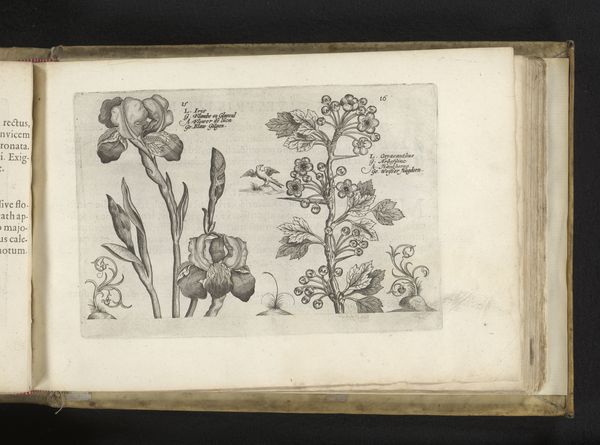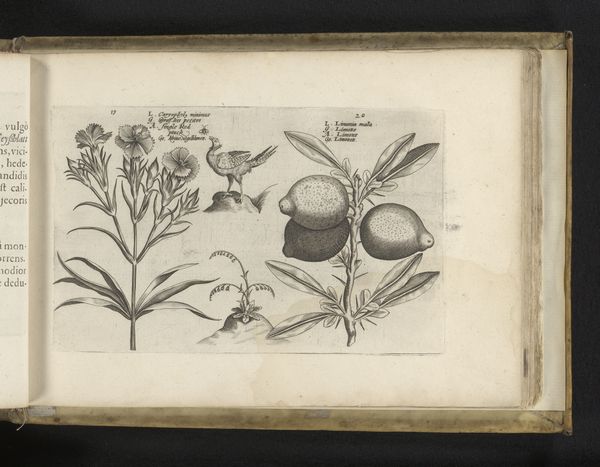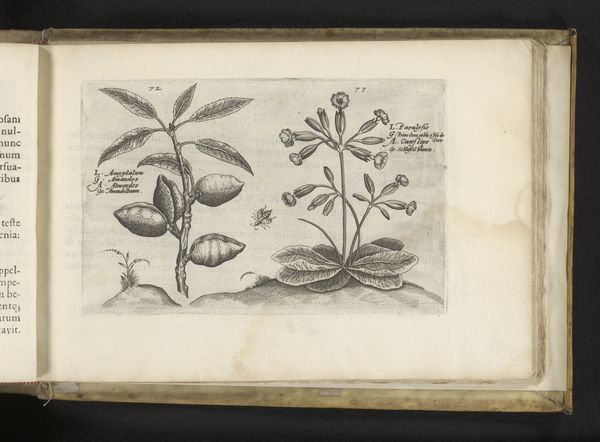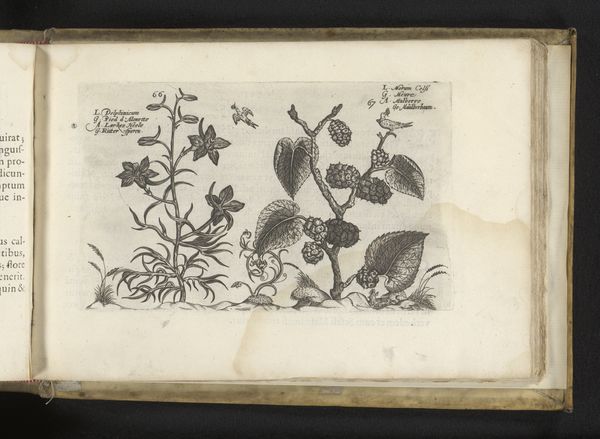
drawing, print, etching, paper
#
drawing
# print
#
etching
#
flower
#
figuration
#
paper
#
line
#
northern-renaissance
#
realism
Dimensions: height 128 mm, width 198 mm
Copyright: Rijks Museum: Open Domain
Curator: What strikes me most about this etching, Crispijn van de Passe’s "Grote klaproos en tuinboon" from 1617, is the directness of the observation. A poppy and a bean plant presented with simple honesty. Editor: There’s a compelling tension between botanical illustration and symbolic statement here. The crisp, clean lines give the drawing a somewhat clinical feel, yet the placement of the poppy, particularly its slightly drooping flower, hints at something more melancholic, no? Curator: I think that's valid, particularly within the context of the time. Remember that floral images are very often deployed symbolically; the poppy, especially, carries potent symbolic weight. As an emblem, it may be deployed to express ideas of sleep, peace, even death. It has an irresistible allure. Editor: Absolutely. Looking closely, the artist really exploits the medium to achieve the kind of precision suited to Northern Renaissance botanical studies; observe how, with seemingly simple marks, he coaxes shape from flat paper. I am quite moved by the balance of the plant masses. There's great thought given to their positioning on the page. Curator: Yes, the meticulous detail in the bean's leaves, for instance. The Northern Renaissance love of accurate description is very much on show. And it makes the poppy seem all the more poignant by contrast. Editor: There is so much latent in these very traditional techniques. Although created as prints—practical objects, intended for study and perhaps instruction—they are full of beauty. Curator: Agreed. As representations of nature, but nature filtered through a particular sensibility. You understand a great deal about period perceptions, culture and psychology, don't you think, from a single example like this. Editor: Undoubtedly. Through subtle variations in form, proportion, and juxtaposition, Van de Passe elevates observation into commentary. I suppose you could say he shows how a well-observed line can itself contain volumes. Curator: Beautifully put! This image continues to reveal nuances and deeper cultural significance that extends well beyond the sum of its parts.
Comments
No comments
Be the first to comment and join the conversation on the ultimate creative platform.


